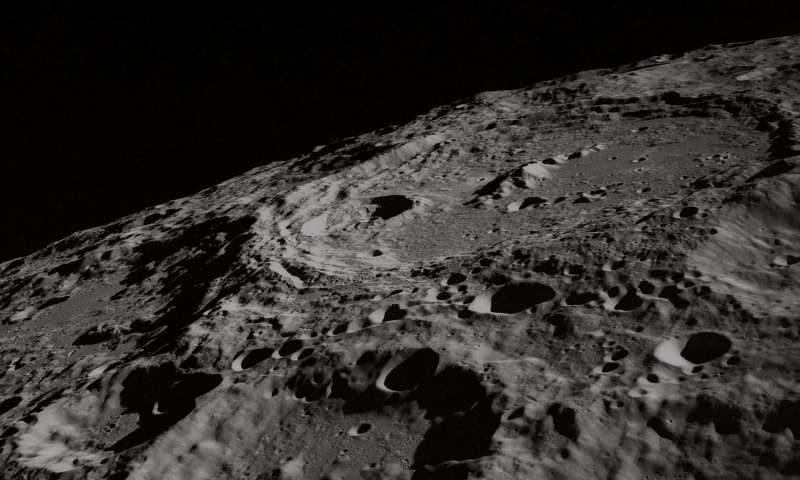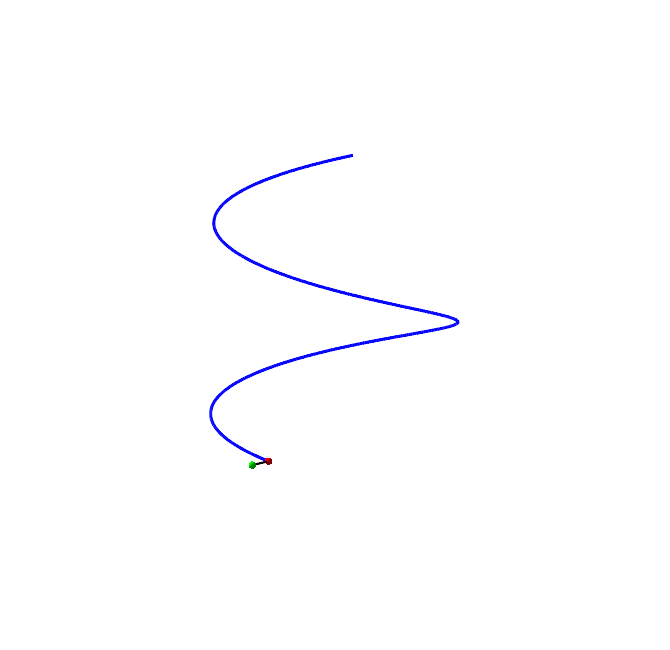It looks like you're using an Ad Blocker.
Please white-list or disable AboveTopSecret.com in your ad-blocking tool.
Thank you.
Some features of ATS will be disabled while you continue to use an ad-blocker.
9
share:
According to the article, basically this can change what we know about the current three main moon creation theories:
Something impacting a planet;
Assimilation of material orbiting a planet;
And a passing object captured by a planet's gravity.

For those as me who don't understand much of physics and need to read the keywords to absorb anything, I'll highlight the main infos.
René Heller, a space scientist with the Maxx Planck Institute for Solar System Research has uploaded a paper to the arXiv preprint server offering possible attributes for the still-unconfirmed exomoon Kepler 1625 b-i. He suggests that if the exomoon does truly exist, it is probably unlike any of the moons in our solar system, which suggests that theories about the origins of moons might have to be expanded.
Back in July, a team of researchers led by Alex Teachey and David Kipping of Columbia University announced that they had found possible evidence of a moon circling a planet outside of our solar system. If the exomoon turns out to be real, it would mark the first time that one has ever been discovered. News of a possible exomoon sighting has set off speculation regarding what it might be like.
It's pretty obvious that there are exomoons even they've not confirmed yet.
What's so special about our solar system to be the only one with one of those?
In his paper, Heller describes the research he has conducted studying the Kepler data that suggests the possible exomoon. He notes the data is not strong enough to pin down a size for the moon, suggesting it could be anywhere from approximately the size of the Earth to the size of Saturn. He does not suggest the data proves the existence of an exomoon, but does offer a wild guess on the size of the exomoon if it is there—approximately the size of Neptune.
A moon that size does not exist in our own solar system, of course, which suggests that if one that large does exist elsewhere, it likely formed in ways that are not described by one of the three main moon creation theories—something impacting a planet, assimilation of material orbiting a planet, or a passing object captured by a planet's gravity. This means that if the exomoon is confirmed and its size and makeup can be determined, it is likely that there will be a race between space groups around the world to find a theory explaining its existence.
Teachey and Kipping have been vocal about their view that researchers should wait to see if the exomoon exists before conducting research or creating theories, lest it all be in vain. They have their sights set firmly on this weekend, when the Hubble Space Telescope will be aimed at the system, possibly confirming or ruling out its existence.
Exciting that we're probably the first humans seeing this.
Sources:
Unconfirmed exomoon could be unlike any of those in our solar system
Possible first sighting of an exomoon
originally posted by: vinifalou
According to the article, basically this can change what we know about the current three main moon creation theories:
Something impacting a planet;
Assimilation of material orbiting a planet;
And a passing object captured by a planet's gravity.
For those as me who don't understand much of physics and need to read the keywords to absorb anything, I'll highlight the main infos.
René Heller, a space scientist with the Maxx Planck Institute for Solar System Research has uploaded a paper to the arXiv preprint server offering possible attributes for the still-unconfirmed exomoon Kepler 1625 b-i. He suggests that if the exomoon does truly exist, it is probably unlike any of the moons in our solar system, which suggests that theories about the origins of moons might have to be expanded.
Back in July, a team of researchers led by Alex Teachey and David Kipping of Columbia University announced that they had found possible evidence of a moon circling a planet outside of our solar system. If the exomoon turns out to be real, it would mark the first time that one has ever been discovered. News of a possible exomoon sighting has set off speculation regarding what it might be like.
It's pretty obvious that there are exomoons even they've not confirmed yet.
What's so special about our solar system to be the only one with one of those?
In his paper, Heller describes the research he has conducted studying the Kepler data that suggests the possible exomoon. He notes the data is not strong enough to pin down a size for the moon, suggesting it could be anywhere from approximately the size of the Earth to the size of Saturn. He does not suggest the data proves the existence of an exomoon, but does offer a wild guess on the size of the exomoon if it is there—approximately the size of Neptune.
A moon that size does not exist in our own solar system, of course, which suggests that if one that large does exist elsewhere, it likely formed in ways that are not described by one of the three main moon creation theories—something impacting a planet, assimilation of material orbiting a planet, or a passing object captured by a planet's gravity. This means that if the exomoon is confirmed and its size and makeup can be determined, it is likely that there will be a race between space groups around the world to find a theory explaining its existence.
Teachey and Kipping have been vocal about their view that researchers should wait to see if the exomoon exists before conducting research or creating theories, lest it all be in vain. They have their sights set firmly on this weekend, when the Hubble Space Telescope will be aimed at the system, possibly confirming or ruling out its existence.
Exciting that we're probably the first humans seeing this.
Sources:
Unconfirmed exomoon could be unlike any of those in our solar system
Possible first sighting of an exomoon
Why exactly couldn't it be explained by the three main theories? Did I miss that explanation in the post?
Even how our moon was formed has been called into question.
Here is a good read if you have the time!
Quanta Magazine - What Made the Moon? New Ideas Try to Rescue a Troubled Theory.
Basically, the accepted "huge impact" does match the evidence because of the lack of evidence of the body that hit the earth are not present in moon rock samples. The article give some different explanations of what could have happened (and how the physics works out).
The exomoon adds to the questions of theory. Which in the end is a good thing. A theory is only an idea and can (and should) be questioned until it is robust enough to withstand questioning.
Here is a good read if you have the time!
Quanta Magazine - What Made the Moon? New Ideas Try to Rescue a Troubled Theory.
Basically, the accepted "huge impact" does match the evidence because of the lack of evidence of the body that hit the earth are not present in moon rock samples. The article give some different explanations of what could have happened (and how the physics works out).
The exomoon adds to the questions of theory. Which in the end is a good thing. A theory is only an idea and can (and should) be questioned until it is robust enough to withstand questioning.
Here is what an UNCONFIRMED exomoon might be like.
I't might be made of green cheese, it's very existence not being confirmed at all
It might have a smiley face on one side, it's very existence not being confirmed at all.
It might be square, it's very existence not being confirmed at all.
And for the size, it states that it ''may'' be circling a planet because if it isn't circling a planet it would not be a moon. For the moon to be circling a planet the planet would have to be much larger than the moon and if the moon is ''wildly guessed' to possibly be as big as Neptune that planet would have to be much larger otherwise the planet would be the moon circling the unconfirmed exomoon. More likely they would be in some kind of thing where they circle around a common central point.
I found no mention of the size of the planet even. It would have to be huge wouldn't it?
I't might be made of green cheese, it's very existence not being confirmed at all
It might have a smiley face on one side, it's very existence not being confirmed at all.
It might be square, it's very existence not being confirmed at all.
And for the size, it states that it ''may'' be circling a planet because if it isn't circling a planet it would not be a moon. For the moon to be circling a planet the planet would have to be much larger than the moon and if the moon is ''wildly guessed' to possibly be as big as Neptune that planet would have to be much larger otherwise the planet would be the moon circling the unconfirmed exomoon. More likely they would be in some kind of thing where they circle around a common central point.
I found no mention of the size of the planet even. It would have to be huge wouldn't it?
How was the moon created? The waveform was already there. The particles just fall into position.
There's really no simpler way to understand the universe, than to understand that planetary bodies are detecting waves and riding them to their exact waveform, determining orbit rotation and makeup of said vibrating particle clump.

The whole thing can be mapped as predictable Sine functions, giving us a better insight on the Life-death cycle as we fly through space.

There's really no simpler way to understand the universe, than to understand that planetary bodies are detecting waves and riding them to their exact waveform, determining orbit rotation and makeup of said vibrating particle clump.

The whole thing can be mapped as predictable Sine functions, giving us a better insight on the Life-death cycle as we fly through space.

originally posted by: imthegoat
originally posted by: vinifalou
According to the article, basically this can change what we know about the current three main moon creation theories:
Something impacting a planet;
Assimilation of material orbiting a planet;
And a passing object captured by a planet's gravity.
For those as me who don't understand much of physics and need to read the keywords to absorb anything, I'll highlight the main infos.
René Heller, a space scientist with the Maxx Planck Institute for Solar System Research has uploaded a paper to the arXiv preprint server offering possible attributes for the still-unconfirmed exomoon Kepler 1625 b-i. He suggests that if the exomoon does truly exist, it is probably unlike any of the moons in our solar system, which suggests that theories about the origins of moons might have to be expanded.
Back in July, a team of researchers led by Alex Teachey and David Kipping of Columbia University announced that they had found possible evidence of a moon circling a planet outside of our solar system. If the exomoon turns out to be real, it would mark the first time that one has ever been discovered. News of a possible exomoon sighting has set off speculation regarding what it might be like.
It's pretty obvious that there are exomoons even they've not confirmed yet.
What's so special about our solar system to be the only one with one of those?
In his paper, Heller describes the research he has conducted studying the Kepler data that suggests the possible exomoon. He notes the data is not strong enough to pin down a size for the moon, suggesting it could be anywhere from approximately the size of the Earth to the size of Saturn. He does not suggest the data proves the existence of an exomoon, but does offer a wild guess on the size of the exomoon if it is there—approximately the size of Neptune.
A moon that size does not exist in our own solar system, of course, which suggests that if one that large does exist elsewhere, it likely formed in ways that are not described by one of the three main moon creation theories—something impacting a planet, assimilation of material orbiting a planet, or a passing object captured by a planet's gravity. This means that if the exomoon is confirmed and its size and makeup can be determined, it is likely that there will be a race between space groups around the world to find a theory explaining its existence.
Teachey and Kipping have been vocal about their view that researchers should wait to see if the exomoon exists before conducting research or creating theories, lest it all be in vain. They have their sights set firmly on this weekend, when the Hubble Space Telescope will be aimed at the system, possibly confirming or ruling out its existence.
Exciting that we're probably the first humans seeing this.
Sources:
Unconfirmed exomoon could be unlike any of those in our solar system
Possible first sighting of an exomoon
Why exactly couldn't it be explained by the three main theories? Did I miss that explanation in the post?
Yours is a good question and was my first question too.
The article seems to suggest two large bodies (One jupiter sized, one Neptune sized). That to me seems more like two planets orbiting each other rather than a planet-satellite situation.
originally posted by: TEOTWAWKIAIFF
Even how our moon was formed has been called into question.
Here is a good read if you have the time!
Quanta Magazine - What Made the Moon? New Ideas Try to Rescue a Troubled Theory.
Basically, the accepted "huge impact" does match the evidence because of the lack of evidence of the body that hit the earth are not present in moon rock samples. The article give some different explanations of what could have happened (and how the physics works out).
The exomoon adds to the questions of theory. Which in the end is a good thing. A theory is only an idea and can (and should) be questioned until it is robust enough to withstand questioning.
I was reading some articles about the structure of the Earth and one thing they noticed was the metal core of our planet actually has two layers, each with separate magnetic field alignments. Researchers aren't sure if this is due to the pressure at those depths forcing Iron atoms into different electron configurations or if it were due to a collision that mixed the cores of two planetoids together.
I've always wondered when they say that a Mars sized planet collided with Earth, why it couldn't be Mars itself?
new topics
-
Supreme Court Oral Arguments 4.25.2024 - Are PRESIDENTS IMMUNE From Later Being Prosecuted.
Above Politics: 11 minutes ago -
Krystalnacht on today's most elite Universities?
Social Issues and Civil Unrest: 20 minutes ago -
Chris Christie Wishes Death Upon Trump and Ramaswamy
Politicians & People: 47 minutes ago -
University of Texas Instantly Shuts Down Anti Israel Protests
Education and Media: 2 hours ago -
Any one suspicious of fever promotions events, major investor Goldman Sachs card only.
The Gray Area: 5 hours ago -
God's Righteousness is Greater than Our Wrath
Religion, Faith, And Theology: 9 hours ago
top topics
-
VP's Secret Service agent brawls with other agents at Andrews
Mainstream News: 14 hours ago, 10 flags -
Nearly 70% Of Americans Want Talks To End War In Ukraine
Political Issues: 14 hours ago, 5 flags -
Sunak spinning the sickness figures
Other Current Events: 14 hours ago, 5 flags -
Electrical tricks for saving money
Education and Media: 12 hours ago, 4 flags -
Late Night with the Devil - a really good unusual modern horror film.
Movies: 16 hours ago, 3 flags -
Krystalnacht on today's most elite Universities?
Social Issues and Civil Unrest: 20 minutes ago, 2 flags -
Any one suspicious of fever promotions events, major investor Goldman Sachs card only.
The Gray Area: 5 hours ago, 2 flags -
University of Texas Instantly Shuts Down Anti Israel Protests
Education and Media: 2 hours ago, 2 flags -
Supreme Court Oral Arguments 4.25.2024 - Are PRESIDENTS IMMUNE From Later Being Prosecuted.
Above Politics: 11 minutes ago, 1 flags -
Chris Christie Wishes Death Upon Trump and Ramaswamy
Politicians & People: 47 minutes ago, 0 flags
active topics
-
University of Texas Instantly Shuts Down Anti Israel Protests
Education and Media • 38 • : marg6043 -
VP's Secret Service agent brawls with other agents at Andrews
Mainstream News • 44 • : ByeByeAmericanPie -
New whistleblower Jason Sands speaks on Twitter Spaces last night.
Aliens and UFOs • 59 • : baablacksheep1 -
Nearly 70% Of Americans Want Talks To End War In Ukraine
Political Issues • 63 • : Consvoli -
1980s Arcade
General Chit Chat • 27 • : alwaysbeenhere2 -
Skinwalker Ranch and the Mystery 1.6GHz Signal
Aliens and UFOs • 143 • : Ophiuchus1 -
"We're All Hamas" Heard at Columbia University Protests
Social Issues and Civil Unrest • 281 • : marg6043 -
I Guess Cloud Seeding Works
Fragile Earth • 42 • : WaESN -
Supreme Court Oral Arguments 4.25.2024 - Are PRESIDENTS IMMUNE From Later Being Prosecuted.
Above Politics • 0 • : WeMustCare -
D.C. Court of Appeals made a horrible ruling against Trump
US Political Madness • 320 • : WeMustCare
9
